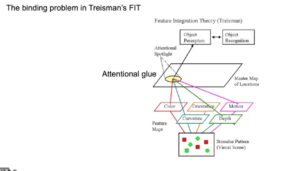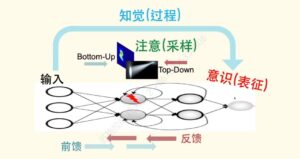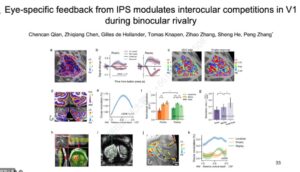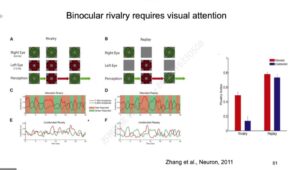Consciousness, as the most unique aspect of human life, is the basis for our perception of the world, interpretation of the self and expression of thought. The famous quote of Descartes — “I think, therefore I am” — accurately described the power that consciousness bequeaths us to identify our own existence. However, scientists are still exploring and debating the nature and source of consciousness.
Propelled by artificial intelligence (AI), these mysteries are being unraveled one by one, shedding new light on our understanding of brain science. Tianqiao and Chrissy Chen Institute (TCCI) and neurochat co-sponsored the 4th TCCI-neurochat conference, which was held online on June 23, Beijing time. At the conference, Professor He Sheng, Vice Director of Academic Affairs from the Institute of Biophysics, Chinese Academy of Sciences, delivered a fascinating presentation entitled “Attention and Consciousness”.
Our explorations in the field of consciousness have undoubtedly entered a new chapter. With the help of science and technology, mankind’s perception and understanding of nature, as well as the deciphering of the working mechanism of the brain, will progress at an unprecedented speed and depth. Scientists are confident that the future of consciousness study is just around the corner.
Unraveling the mystery of attention: a revolutionary dialogue integrating vision and cognitive science
To begin with, Professor He guided us to understand that when the brain processes various types of information, different modules within it have their own roles to play, but when the information is presented in our consciousness, these features do not exist in isolation, but are integrated into a complete representation of the object. In this process, attention functions as a glue that effectively compiles scattered information.

However, his exploration did not stop there. He further pointed out that we should view attention as a process of transforming external input into self-awareness. In this process, we unconsciously generate rapid hypotheses about the information we receive, thus forming predictions or models. This predictive coding mechanism is not reliant on stimulus patterns, yet it is extremely revealing to our understanding of the process of self-awareness formation.
Professor He’s team also conducted an experiment called “visual crowding”. When visual elements are too dense, although our visual discrimination is sufficient to distinguish them apart, it becomes difficult to perform more complex tasks such as counting or identifying attributes. However, if the elements were sparse enough, the task could be easily accomplished even if the observer’s gaze remained in the center. This phenomenon reveals the limitations of attentional mechanisms when dealing with dense information. Further studies also found that even if observers could not accurately recognize the specific orientation of each line, they were still able to perceive the orientation of the overall pattern. This finding emphasizes the critical role of the primary visual cortex in information processing.
Professor He stressed that attention is not just a passive process of information screening, but an active process of information sampling. This conclusion has far-reaching implications for our understanding of human cognitive processes, especially the correlation between attention and consciousness. His research not only helps to reveal the mysteries of consciousness, but also provides strategies on how to utilize attentional resources more effectively.

Probing consciousness: delving into its origin, functions and influence
Consciousness can be understood in two basic dimensions: the state of consciousness or levels of consciousness, and the content of consciousness. These two dimensions not only depict our level of awareness, but also reflect our understanding and perception of the input information.
In addition to this, Professor He also discussed the function of consciousness in depth. He interprets consciousness from a practical perspective, viewing it as an important tool for processing information. How capable we are of processing information in the unconscious state is an important topic of his concern and exploration. Therefore, researchers focus on the information processing function of consciousness, and study the extent of information processed in the unconscious state through various experimental paradigms.
Professor He’s team used powerful experimental techniques such as binocular suppression to achieve suppression of specific information, and thus to study our ability to process information in an unconscious state. In this way, they were able to study in detail how information is processed in different states.

In addition, Professor He also mentioned the important role of attention in the study of consciousness. Some studies have shown that people’s attention can still be attracted or influenced by certain information in an unconscious state, which means that our attention can function in an unconscious state. This has significant theoretical and practical implications for understanding how stimuli direct our attention and how attention affects our perception and behavior.
Attention and consciousness: analyzing and interpreting binocular rivalry and visual perception
As mentioned by Professor He, the concepts of attention and consciousness are crucial in psychology and neuroscience, and that have sparked numerous discussions about human mental processes and cognitive functions. The interaction and influence of these two concepts are especially important in the context of binocular rivalry and visual perception.
Binocular rivalry is a unique visual phenomenon. When each of our eyes receives different visual information, the brain does not process both at the same time, but rather chooses between them, which means that we can perceive only one source of information at any given moment. This phenomenon reveals, to some extent, the key role of attention in the processing of visual information. Professor He further elaborated that when your attention is concentrated on a certain visual stimulus, the related signal is strengthened in the brain while others inhibited, which gives rise to the phenomenon of binocular rivalry. However, once the attention is diverted, this competition will disappear. Therefore, we can infer that the emergence of binocular rivalry requires visual attention.

At the same time, our consciousness relies to some extent on attention. When our attention is focused on a stimulus that contains conflict or ambiguity, the brain tries to resolve this conflict and thus reach a stable perceptual state. In other words, through attention, we are able to resolve perceptual conflicts, integrate information, and form conscious representations of the external world and internal states.
Regarding the relation between attention and consciousness, Professor He also made an important point: “What is difficult to notice is difficult to perceive.” This means that only when a certain stimulus is strong enough to attract our attention will we incorporate it into our consciousness. This viewpoint further emphasizes the critical role of attention in forming consciousness.
Overall, attention and consciousness play a complex and central role in human visual perception. In the context of binocular rivalry, the interactions and influences of these two provide a unique perspective on our understanding of how the brain processes and resolves visual conflicts. Future research will need to continue to delve deeper into the relationship between attention and consciousness and their specific roles in visual perception in order to better understand and reveal human cognitive processes and psychological states.